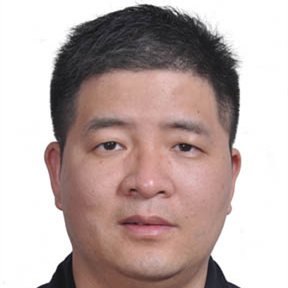Areas of Focus
- Molecular mechanisms of human pathogenic fungi and host interactions
- Important signaling pathways in Candida albicans symbiosis-pathogenesis transition
- Fungal effector factors and host antifungal immunity
- Molecular mechanisms of fungal crossing the host blood-brain barrier
- How gut and reproductive tract microbiota affect fungal infection and host immunity
- Screening of new antifungal drugs and related mechanisms
- Epigenetic regulatory mechanisms of fungal drug resistance
Work Experience
- 2013-07 to present - Chinese Academy of Sciences Shanghai Institute of Pasteur - Researcher, Doctoral Supervisor
- 2011-07 to 2013-06 - University of California, San Francisco - Assistant Specialist
- 2005-07 to 2011-06 - University of California, San Francisco - Postdoctoral Researcher
- 2004-09 to 2005-06 - University of Nebraska-Lincoln - Research Assistant
Academic Background & Achievements
- 1998-08--2004-08 Ph.D.: University of Nebraska-Lincoln
- 1995-08--1998-08 Master's: Shanghai Institute of Plant Physiology and Ecology, Chinese Academy of Sciences
- 1990-08--1994-06 Bachelor's: Fudan University
Publications
- Candida Infections: an update on host immune defenses and anti-fungal drugs, Gao, N., and Chen, C., 2016
- Passage through the mammalian gut triggers a phenotypic switch required for Candida albicans commensalism, Pande, K., Chen, C. and Noble, S. M., 2013
- Post-transcriptional regulation of the Sef1 transcription factor controls the virulence of Candida albicans in its mammalian host, Chen, C. and Noble, S. M., 2012
- A unique iron homeostasis regulatory circuit with reciprocal roles in Candida albicans commensalism and pathogenesis, Chen, C., Pande, K., French, S. D., Tuch, B. B. and Noble, S. M., 2011
- Stalled spliceosomes are a signal for RNA-mediated genome defense, Dumesic, P., Natarajan, P., Chen, C., Drinnenberg, A., Schiller, B., Moresco, J., Thompson, J., Yates, J., Bartel, D., and Madhani H., 2013
- Systematic gene deletion and analysis of virulence in the human fungal pathogen Cryptococcus neoformans, Liu, O. W., Chun, C. D., Chow, E. D., Chen, C., Madhani, H. D. and Noble, S. M., 2008
- Proline suppresses apoptosis in the fungal pathogen Colletotrichum trifolii, Chen, C. and Dickman, M. B., 2005
- Shp2 mediates C-type lectin receptor-induced Syk activation and anti-fungal Th17 responses, Deng Z., Ma S., Zhou H., Zang A., Fang Y., Li T., Shi H., Liu M., Du M., Taylor P., Zhu H., Chen J., Meng G., Li F., Chen C., Zhang Y., Jia X., Lin X., Zhang X., Pearlman E., Li X., Feng G., and Xiao H., 2015
- Molecular basis of ubiquitin recognition by the autophagy receptor CALCOCO2, Xie X., Li F., Wang Y., Lin Z., Cheng X., Liu J., Chen C., and Pan L., 2015
- Internalized Cryptococcus neoformans activates the canonical Caspase-1 and the noncanonical Caspase-8 inflammasomes, Chen M., Xing Y., Lu A., Fang W., Sun B., Chen C., Liao W., and Meng G., 2015
- Acapsular Cryptococcus neoformans activates the NLRP3 inflammasome, Guo C, Chen M, Fa Z, Lu A, Fang W, Sun B, Chen C, Liao W, Meng G., 2014
- A site specific acetylation mark on the essential RSC chromatin remodeling complex promotes resistance to replication stress, Georgette, C., Chen, C., Shih, S., et al., 2011
- cAMP blocks MAPK activation and sclerotial development via Rap-1 in a PKA-independent manner in Sclerotinia sclerotiorum, Chen, C., and Dickman, M. B., 2005
- Dominant active Rac and dominant negative Rac revert the dominant active Ras phenotype in Colletotrichum trifolii by distinct signaling pathways, Chen, C., and Dickman, M. B., 2004
- Cdc42 is required for proper growth and development in the fungal pathogen Colletotrichum trifolii, Chen, C., Ha, Y-S., Min, J-Y., Memmott, S. D., and Dickman, M. B., 2006
- A CDC42 homologue in Claviceps purpurea is involved in vegetative differentiation and is essential for pathogenicity, Scheffer, J., Chen, C., Heidrich, P., Dickman, M. B., and Tudzynski, P., 2005
- Colletotrichum trifolii TB3 kinase, a COT1 homolog, is light inducible and becomes localized in the nucleus during hyphal elongation, Chen, C., and Dickman, M. B., 2002
- MAPK regulation of sclerotial development in Sclerotinia sclerotiorum is linked with pH and cAMP sensing, Chen, C., Harel, A., Gorovoits, R., Yarden, O., and Dickman, M. B., 2004
- Identification and Characterization of Sclerotinia sclerotiorum NADPH Oxidases, Kim, H.J., Chen, C., Kabbage, M. and Dickman, M.B., 2011
- A tomato QM-like protein protects Saccharomyces cerevisiae cells against oxidative stress by regulating intracellular proline levels, Chen, C., Wanduragala, S., Becker, D. F., and Dickman, M. B., 2006





